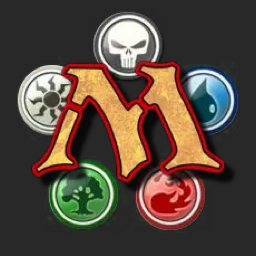

Ahh, I knew that proc must have some neat potential! That’s incredible lol, definitely have to mess with it more.
I had the same thoughts when I first encountered it (and I think it was the only time I saw it). I guess that explains why it’s so rare. The potential is not too obvious. And maybe I have to add, not too easily unlocked. At least my approach resulted in a rather complicated deck with many points of failure. But I guess when you run so many copy spells yourself, you know these situations when you draw only copy spells but nothing to copy :D
For that reason, I currently run only 3 Estrid and only 2 Wingbright. I had Mirrormade in for a while - thought it would be neat to copy opponent enchantments with it, to further replicate them with Estrid, even after Mirrormade has been removed. But after a while I realized I never had a good opportunity to use it.
It’s really really amusing with oddball cards like Haphazard Bombardment
Man, that sounds good! That’s 7 mana, right? And you get one of those for free in each upkeep, distributing aim markers on everything ^^
I guess you need to be more careful with the expiration, since that is harder to predict here than with sagas.
Haphazard Bombardment is too far from my current approach, so I won’t try myself. But if you do, I’d love to hear about it!






















I visited the bug/report/ideas pages of Arena many times over the years. Every time, I got the impression the design is either willingly neglected, or intentionally poor in user guidance. In one or two few occasions, I managed to find my way through to complete what I wanted, but more often I gave up in frustration after a while.
And while that is not pretty, I don’t find it much surprising. The devs probably have a backlog of unfulfilled tasks well beyond next year, since there are always more ideas (and they turn out more work intensive than anticipated) than the devs can handle.
So there isn’t really much incentive to make sure people can easily report and suggest a ton of additional stuff.
Speculations aside, your suggestion makes a lot of sense. I also noticed that list offers mostly irrelevant stuff, although in other situations they present a well behaved list, only showing relevant entries.